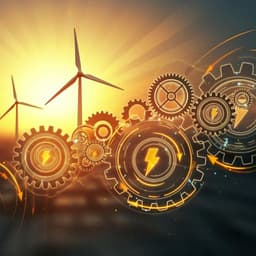
Environmental Studies and Forestry
Do innovation and renewable energy transition play their role in environmental sustainability in Western Europe?
H. Mahmood, A. U. R. Irshad, et al.
This study by Haider Mahmood, Ateeq ur Rehman Irshad, and Muhammad Tanveer explores how renewable energy transition and innovation play crucial roles in lowering CO2 emissions across 25 Western European nations. With significant insights into the Environmental Kuznets Curve, the research underscores the importance of fostering policies that support renewable energy and innovation for a sustainable future.
Playback language: English
Related Publications
Explore these studies to deepen your understanding of the subject.







